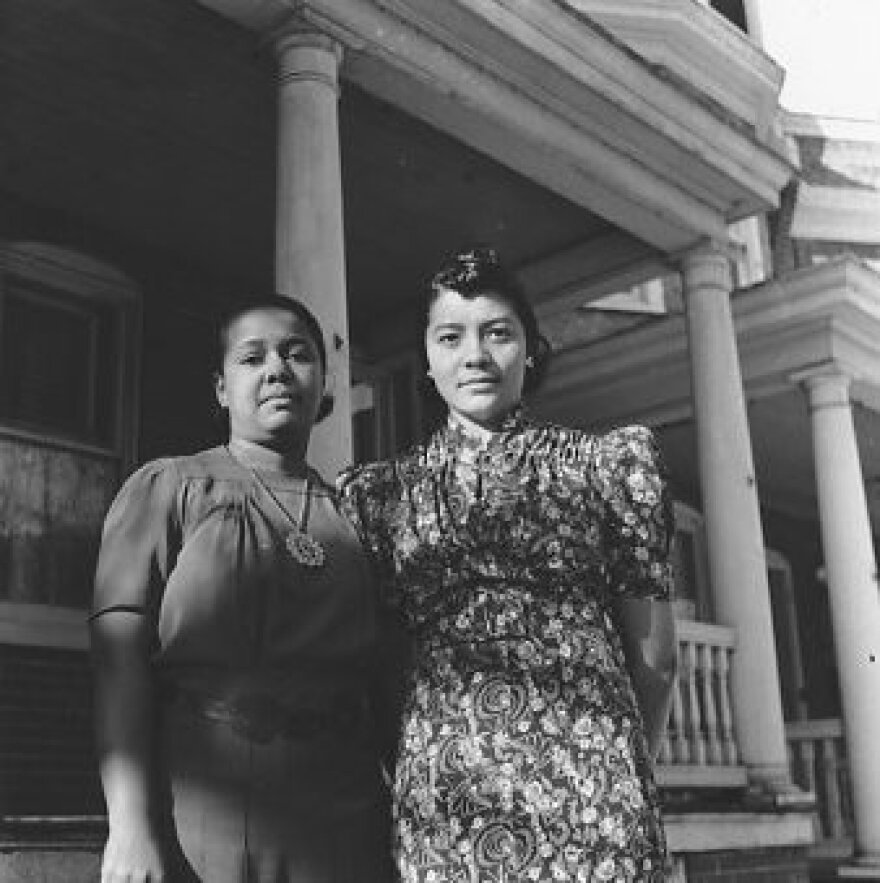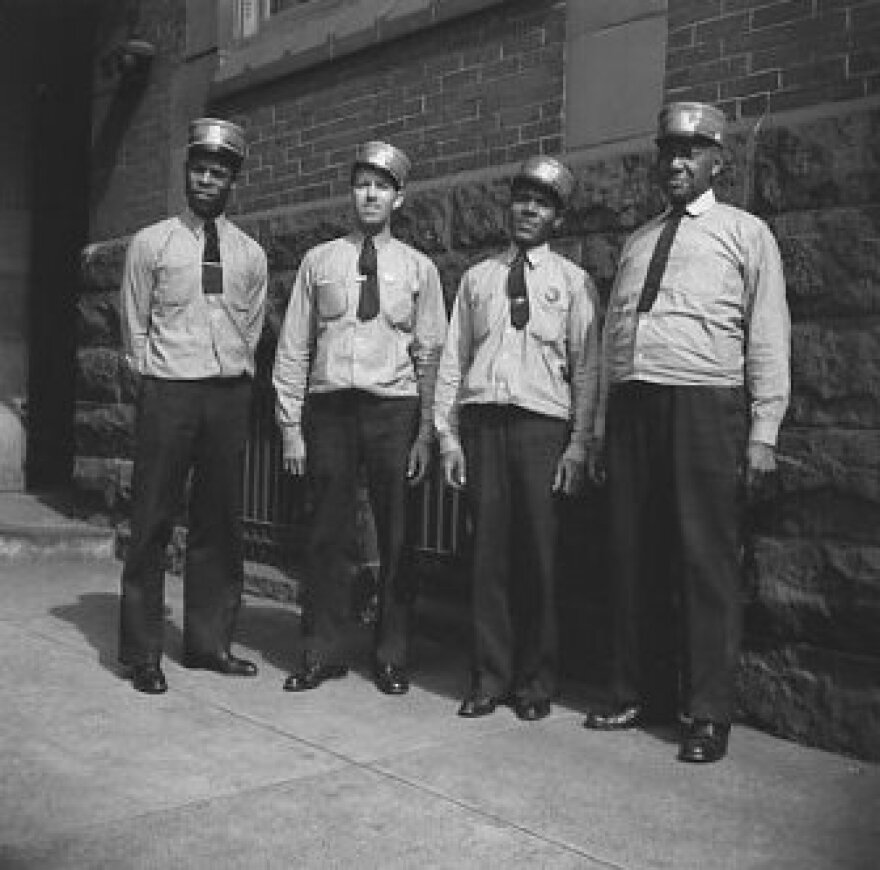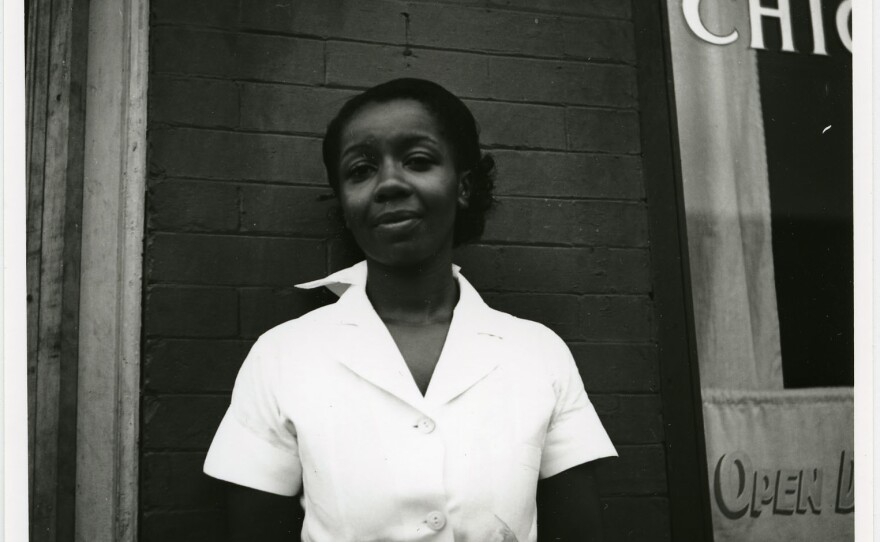March’s History Matters featured an image of Estella’s Beauty Shop on Wilmington's East Side from 1939. Here in April, we focus on the man behind that photo and hundreds of others and the memories they evoke.
That man is Henry Szymanski, who grew up in Wilmington in the 1930s. As a Polish-American teenager living at 2nd and Lombard in Wilmington, he became interested in photography through the local Boys Club and then began experimenting with his Brownie camera.
In 1938, several business owners from Wilmington’s East Side contracted him to photograph their businesses. These rare photos capture the lives of area residents otherwise not well documented, piecing together a photographic history of the historically black neighborhood.

In the 1930s, Szymanski wasn’t considered a professional photographer like Arthur Sanborn. Instead – even when he was photographing area storefronts and business owners - he was an amateur.
“A lot of these folks would have not been able to have afforded professional photography from the likes of Sanborn," said Leigh Rifenburg, Curator for the Delaware Historical Society. She says Szymanski probably earned pocket change by photographing area African American businesses.
“We have individual people, we have nightclubs represented, everyday businesses from things like Elsie’s chicken shack to barber shops to dentists," Rifenburg said. "So he really was going into neighborhoods and documenting everyday people going about their daily lives.”
Some Wilmington residents like Florence Collins-Hardy recall some of those places. She has an almost photographic memory of what the East Side looked like when she was growing up, listing off the names of business after business and where it was located.
“When you look at these Szymanski photographs you can see a whole community that didn’t need to go outside to get much of anything," Collins-Hardy said.

But one image from the Szymanski collection particularly stood out to her – Kruse Pool, the only pool in the city for African Americans during segregation.
“That was it – you couldn’t go to any other pools," Collins-Hardy said. "You couldn’t go to Price’s Pool which was on the North side of town off of Vander Ave.”
She remembers going to that pool as a young girl. But other images evoke memories of a not-so-happy time, at the outset of WWII. Tanks rolled down the streets of Wilmington, captured by Szymanksi.
“Oh I remember these tanks going down the street, yes," she said.
Szymanski photographed the tanks in February 1939 – during a Defense Parade down Market Street before the war began. Collins-Hardy wasn’t born yet, but does remember seeing the tanks a few years later when she was just a child.
But Szymanksi wouldn’t have taken photos of the tanks at that time because he left Wilmington in 1941 to enter the Army Air Corps during World War II.
But those photos are an anomaly - the majority of Szymanski’s photos portray Wilmington’s working class – including railroad porters.

“That’s a story, too – within itself," Collins-Hardy said. "To be a porter for the railroad was a very good job to have, and very difficult to get in. The porters were also the first ones to have a union.
Cynthia Oates’s father worked at an Esso gas station, pumping gas.
When she attended an event at the Delaware Historical Society several years ago – she was surprised to see a photo of her father, and his boss outside the Esso station.
“When I walked in, I had no idea and I just walked in and said – oh my God, that’s my daddy!" Oates said. "And somehow or another, my son got ahold of this picture, had it made and gave it to me for Mother’s Day.”
Her father’s name was Herbert, but she only knew her father’s boss as Mr. White.
“You know, we didn’t call adults by their first names – we called them by their last names," Oates said.
And – she didn’t know much else about her father’s profession, either.

“During that time – really – you just didn’t ask those kinds of questions," she said. "Cause it was adult business, and children were not allowed to talk about adult business.”
Oates’ mother started working as a domestic worker but saved up money working as a welder for Dravo shipyard on Wilmington’s waterfront during WWII to go back to school to become a teacher.
Szymanski, however, did not capture any photos of her.
“They had a lot of African American women doing that work – and you don’t see any pictures of them, you don’t hear any history about them working there," Oates said. "But there were a lot of African American women working there during that time.”
Szymanksi’s photos were not limited to Wilmington’s East Side. He photographed the West Side, and even predominantly African-American suburbs just outside of Wilmington.
“You had a community – you had a couple of communities - that lived outside of the city that were majority African Americans, Buttonwood, Dunleaf," Collins-Hardy said.

She says many of the people who lived in those suburbs were of high social status, but would come into the city for church.
The over 300 black-and-white images captured by Szymanski depicting these diverse neighborhoods are among the only existing photos of them.
Leigh Rifenburg says that’s significant.
“I think Szymanski’s legacy is really interesting here in Wilmington in that he was an amateur photographer but he’s left us with very professional looking documentation of neighborhoods and people for which we would have had little to no information," Rifenburg said.
And as a young white man – Szymanski broke down racial barriers in the city.
“He really earned a certain level of trust within the African American community I think because he was performing such a valuable service to them – he made a lot of friends on the East side of Wilmington," Rifenburg said. "To the extent that when the riots were taking place, it’s our understanding that he was really still welcomed on the East side which was pretty remarkable for the time.”
Over 100 photos from the Szymanksi collection are available online, part of the Delaware Historical Society’s digital collections.
















